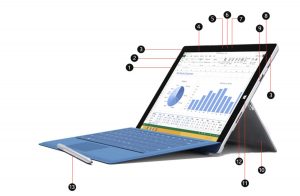Joomla CMS: Empowering Websites with Versatility and User-Friendliness

In the realm of content management systems (CMS), Joomla has established itself as a robust and highly flexible platform for building and managing websites. With its extensive features, ease of use, and strong community support, Joomla has become a popular choice for individuals and organizations alike. In this article, we will explore the reasons why people choose Joomla, delve into its installation and setup process, and highlight the strengths of this powerful CMS.
Why Choose Joomla?
Versatility: One of the primary reasons people opt for Joomla is its versatility. Whether you are creating a personal blog, a corporate website, an online store, or a community forum, Joomla offers a wide range of built-in features and extensions to cater to diverse needs. Its extensive library of templates and extensions allows users to customize their websites with ease.
User-Friendly Interface: Joomla’s intuitive user interface makes it accessible to both beginners and experienced users. The administration panel provides a clean and organized layout, making it easy to navigate and manage content. The WYSIWYG (What You See Is What You Get) editor simplifies the process of creating and editing web pages, empowering users to publish content effortlessly.
Strong Community Support: Joomla boasts a large and active community of developers, designers, and users who contribute to its continuous improvement. The community-driven nature of Joomla ensures that users have access to extensive documentation, forums, tutorials, and updates. This active support system makes it easier to troubleshoot issues, find solutions, and stay up to date with the latest trends in web development.
Installation and Setup
System Requirements: Before installing Joomla, ensure that your hosting environment meets the system requirements. It typically requires a web server (e.g., Apache), a database server (e.g., MySQL), and PHP. Verify that you have the necessary versions of these components.
Download and Upload: Visit the official Joomla website (https://www.joomla.org) and download the latest stable release. Extract the downloaded package and upload the files to your web server using an FTP client or a hosting control panel.
Create a Database: Set up a MySQL database using your hosting control panel or a tool like phpMyAdmin. Make a note of the database name, username, and password for future reference.
Installation Wizard: Open your web browser and navigate to the URL where you uploaded Joomla. The installation wizard will guide you through the process. Provide the necessary information, such as database details, site name, and administrator credentials.
Customize and Configure: Once the installation is complete, you can customize your Joomla website by selecting a template, installing extensions, and configuring settings according to your requirements. Joomla’s backend interface makes it straightforward to manage content, create menus, and control various aspects of your website.
Conclusion
Joomla CMS has earned its reputation as a reliable and feature-rich platform for website development. Its versatility, user-friendly interface, and strong community support make it an excellent choice for individuals and organizations seeking to establish a robust online presence. With Joomla, you can create and manage websites with ease, regardless of your level of technical expertise. So, whether you’re a beginner or an experienced web developer, give Joomla a try, and unlock the power of this exceptional CMS. At the end, you can try Joomla on your own PC by using WAMP Server.







